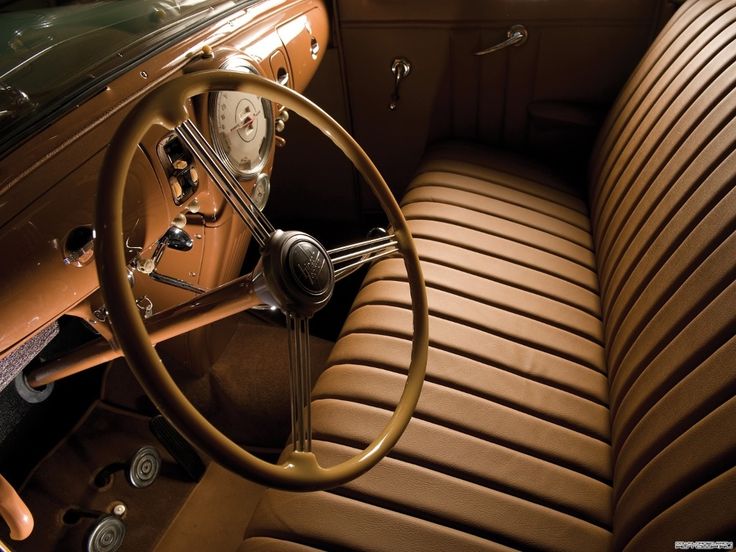When the 1929 stock market crash caused the Great Depression, the United States put one collective foot behind the other, plodding through what would turn into ten years of recovery.
One would think this kind of economic downturn would kill a nascent industry like automobiles. It hurt the car industry, people lost jobs, but kill it did not.
Many in the industry suffered, but innovation marched forward. Many of the innovations of the ‘30s were already works in progress, scaled down to meet a smaller demand, but inevitable due to market demands.
What was once an outlet for the disposable incomes [read: credit lines] of customers in the ‘20s, turned into a decade of lab ideas which came to fruition.
The 1930s became the fertile soil from which grew many innovations car manufacturing would retain for decades.
The Strong Survive

1936 Ford Plant | fasttrackteaching.com
The first big impact the Great Depression made on the industry was to solidify the positions of the strongest car companies in the United States.
During the Roaring Twenties, extensions of credit and disposable incomes flooded showrooms with buyers. Everyone had to have the car, the coolest invention of the new century.
The industry expanded fast, from manufacturers to dealers, with every point between. When the bough broke, many of the smaller manufacturers didn’t survive, paving a path of destruction for the big three, GM, Ford, and Chrysler.
Those three brands would remain at the top of the pile until today, surviving downturns like it was a sport.
As with any economic downturn, the strong not only survive, they thrive on the desperate liquidation of the weak. It’s not only materials that become available, but talent too.
The big car companies scooped up talent and ideas at a steal, and there was nobody to stop them. All that talent fed into their innovation output.
Better Options

1938 Lincoln Zephyr | Pinterest
For the families that didn’t suffer from the depression, their car options may have decreased, but the added value in their remaining options increased.
The manufacturers mainlined the best ideas into their lineups, making irresistible high-quality cars that blew the tires of the prior decade of cars.
Prior to the 1930s, manufacturers built car bodies about the same carriages or boats. There was a lot of wood. The parts of the car were not single pieces, but layers of materials in an attempt to create something uniform.
The Dodge Brothers came out with steel-bodied cars in 1916, but it was the mid-1930s when the process became more scalable.
Automobile manufacturers started making cars from single sheets of drawn and stamped steel. The technology allowed manufacturers to standardize car roofs, and build cars that felt more solid, with more aerodynamic parts.
Gone were the angular lines of the ‘20s. These more solid cars were also more capable. They could take bigger engines. The 1930 Cadillac offered the first V-16 of any manufacturer.
Drivetrains advanced too. The 1930s witnessed the first automatic transmission.
Cars started to house new features, like climate controls, car radios, and windshield defrosters. Almost every aspect of the car improved during the ’30s.
Post ‘30s Innovations

1940s Chevy | Pinterest
It wasn’t that the automobile industry didn’t enjoy technological innovations after 1939, but the advances were more upgrades, not revolutions. They were improvements on the ideas already introduced in the ‘30s.
Where the 1930s radically changed the way car makers built, for example, car bodies, the subsequent decade only changed the shapes of those bodies. They still made them largely the same way.
The ‘50s produced some wild car designs, but they weren’t doing something manufacturers from the 30s couldn’t have reproduced had they the plans and the market to produce cars with massive fins.
Amenities added in the 30s, like climate controls, and radios, engineers only improved in the following decades.
They didn’t come up with completely new amenities unless we count the introduction of flat panel screens in recent history, and even that has only been in recent history.
We may yet see major innovations come to the automotive industry as cars become automated. There are many conventions of cars built around the driver’s seat, which when removed, changes everything about a car’s interior.
Also, new materials have made some inroads, plastics, and molds, and aluminum is quite popular these days, but who knows what technologies like 3D printing could do to making cars.
Perhaps the 2030s will be the next round of serious innovation.


